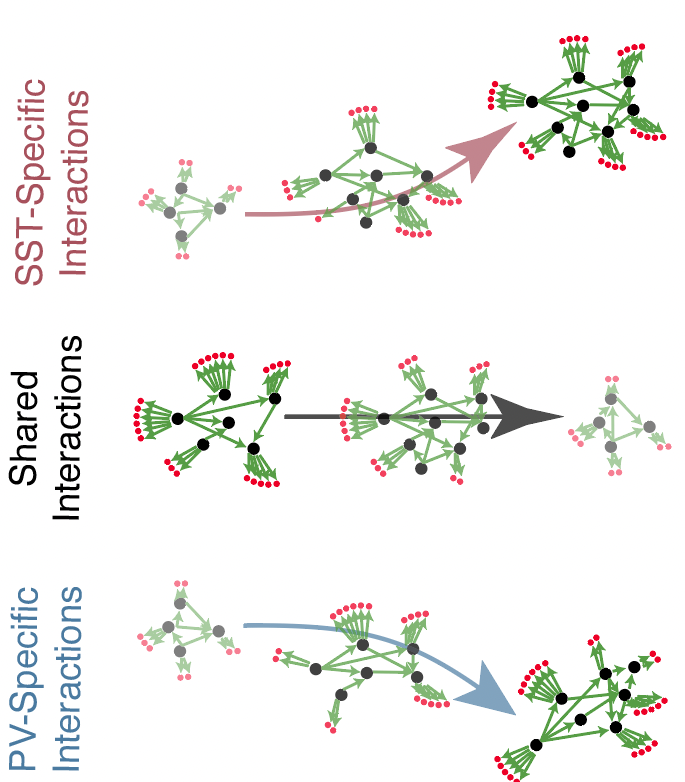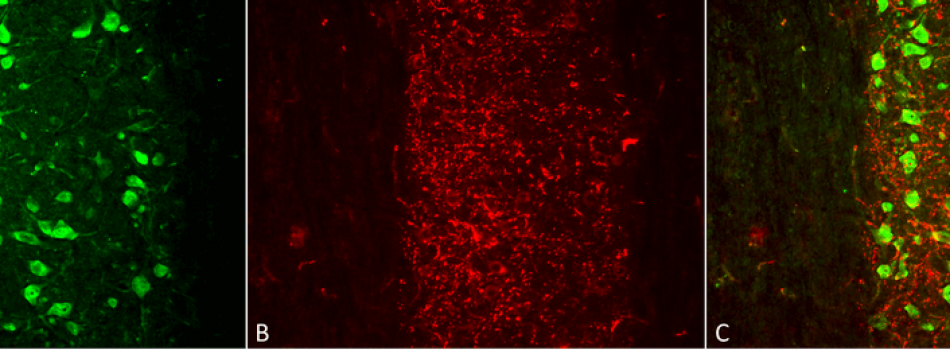

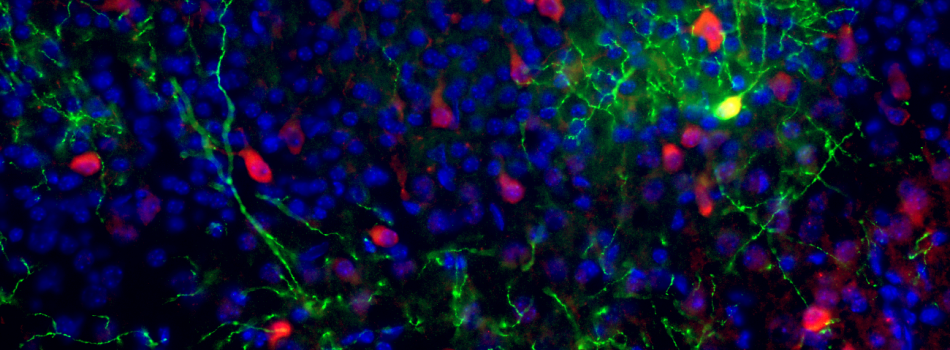

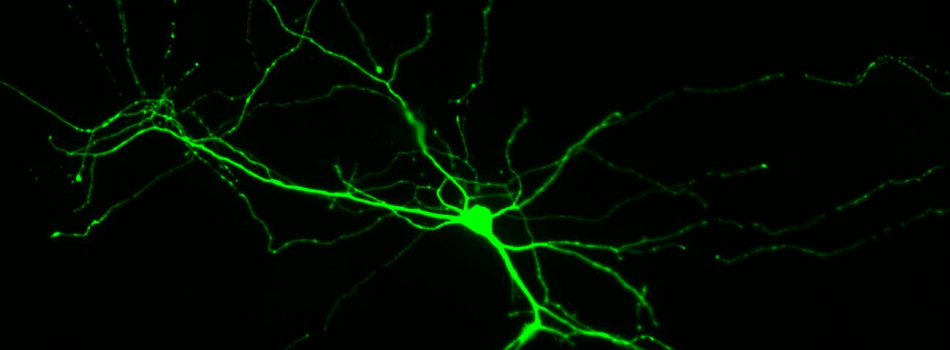

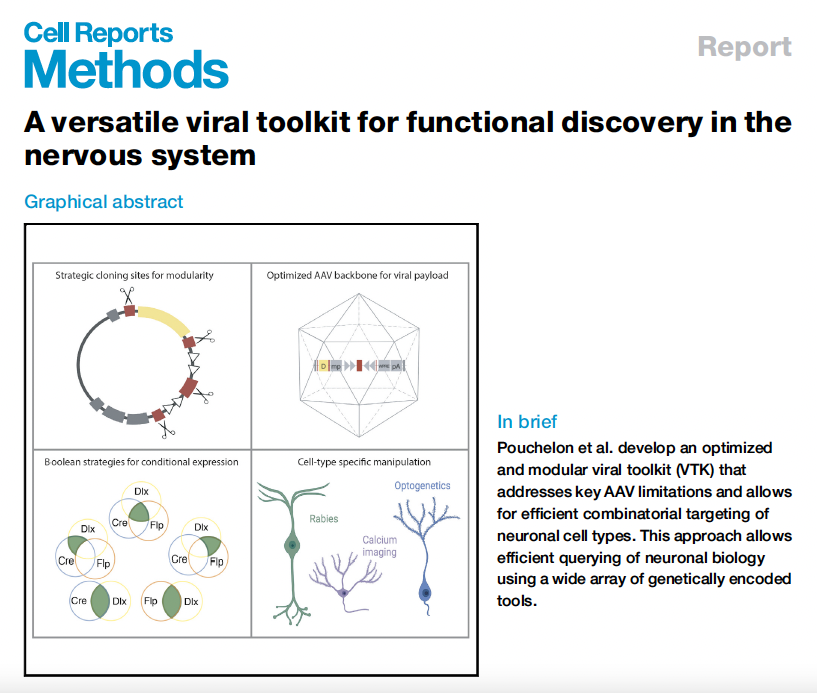
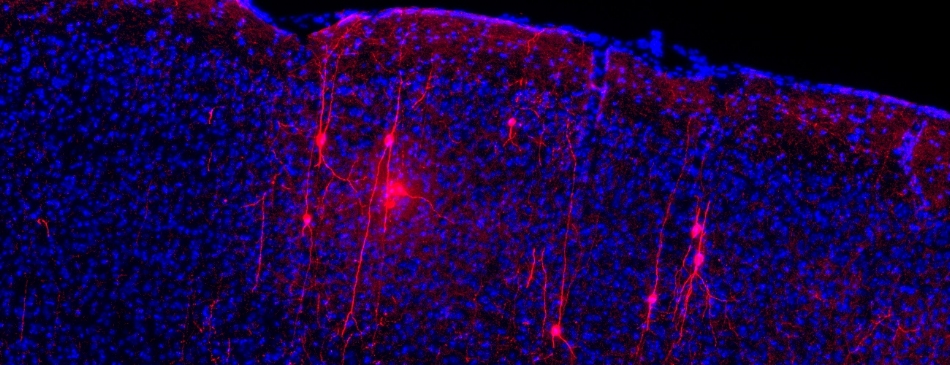
A century ago Ramon y Cajal dubbed the local short axon cells of the brain, the inhibitory interneurons, “the butterflies of the soul”. With characteristic insight, he inferred that these populations, which possess such enormous morphological diversity, would ultimately prove to have an equally impressive breadth of functional attributes. Recent studies have born out this prediction and shown that inhibitory interneurons are much more than simple gatekeepers of excitation. Depending on which interneuron subtype is recruited they are able to refine or unite brain activity in a startling multitude of ways. The Fishell laboratory is focused on how this diversity is created. Understanding how this is accomplished during development remains one of the most daunting problems in biology. In particular, we wish to understand not only how the vast variety of inhibitory interneuron subtypes are generated but how they subsequently integrate into the bewildering array of neural circuits that are embedded in different brain structures. Our working hypothesis is that this is achieved through a two-step process. The first involves genetic programs that in accordance with their birthdate create a finite number of cardinal interneuron subtypes (Research Topic 1 - The Embryonic Specification of Interneurons). Following the tiling of these newly born cardinal subtypes across different brain structures, local cues act to create the definitive subtypes characteristic of the distinct cortical and subcortical areas (Research Topic 2 - Interneuron Integration and Synapse Formation). Importantly, as we have explored the molecular control of these events, it has become clear that perturbation of this process can result in a variety of brain dysfunctions including autism spectrum disorder (ASD), intellectual disability (ID) and schizophrenia. A new and growing interest in the laboratory is therefore aimed at seeing if better understanding of these developmental events can lead to the development of new treatments for these disorders (Research Topic 3 - Interneuron Function and Dysfunction). Finally, we have recently made efforts to expand the armamentarium of tools to target and manipulate cortical cells (Topic 4 - Building a toolkit for targeting interneurons across mammalian species). To do so we have combined efforts with the laboratory of Paola Arlotta and leveraged the growing body of genetic and epigenetic information characteristic to different cortical populations to identify enhancers that can bestow cell type specific expression of adenoviruses (AAVs). By providing access to the breadth of cortical cell types, we believe this will be transformative for researchers aiming to understand normal and pathophysiological cortical function
Research Areas
The Embryonic Specification of Interneurons
Interneuron development is intimately linked to their ultimate function.
Interneuron Integration into the Cortical Layers
In one of the most remarkable events in neural development, newly born interneurons disperse throughout the brain to populate strikingly distinct structures including the cortex, hippocampus, striatum and amygdala.
Interneuron Function and Dysfunction
We are interested in determining the genetic and developmental origins of inhibitory interneuron diversity.
Building a Toolkit for Targeting Interneurons Across Mammalian Species
We have made considerable efforts to collect detailed information for the breadth of cortical interneuron subtypes.

